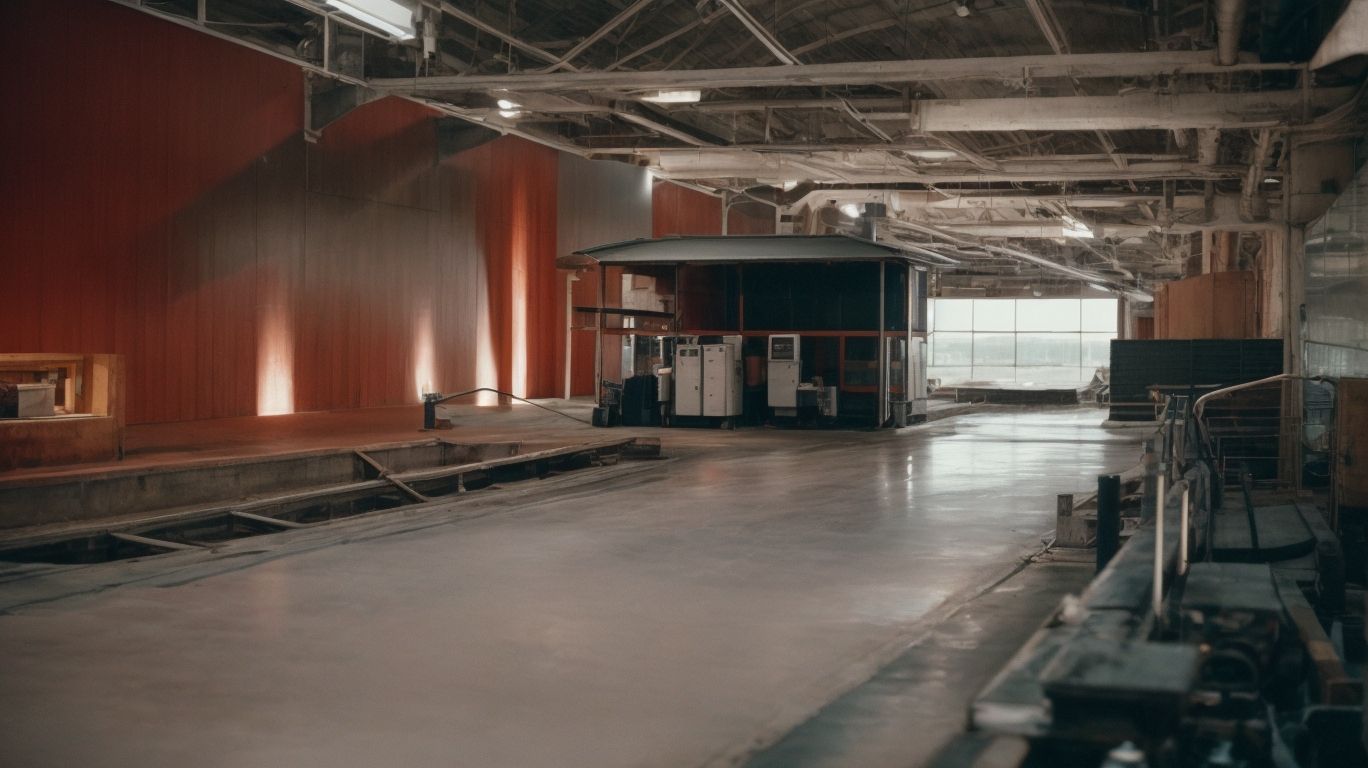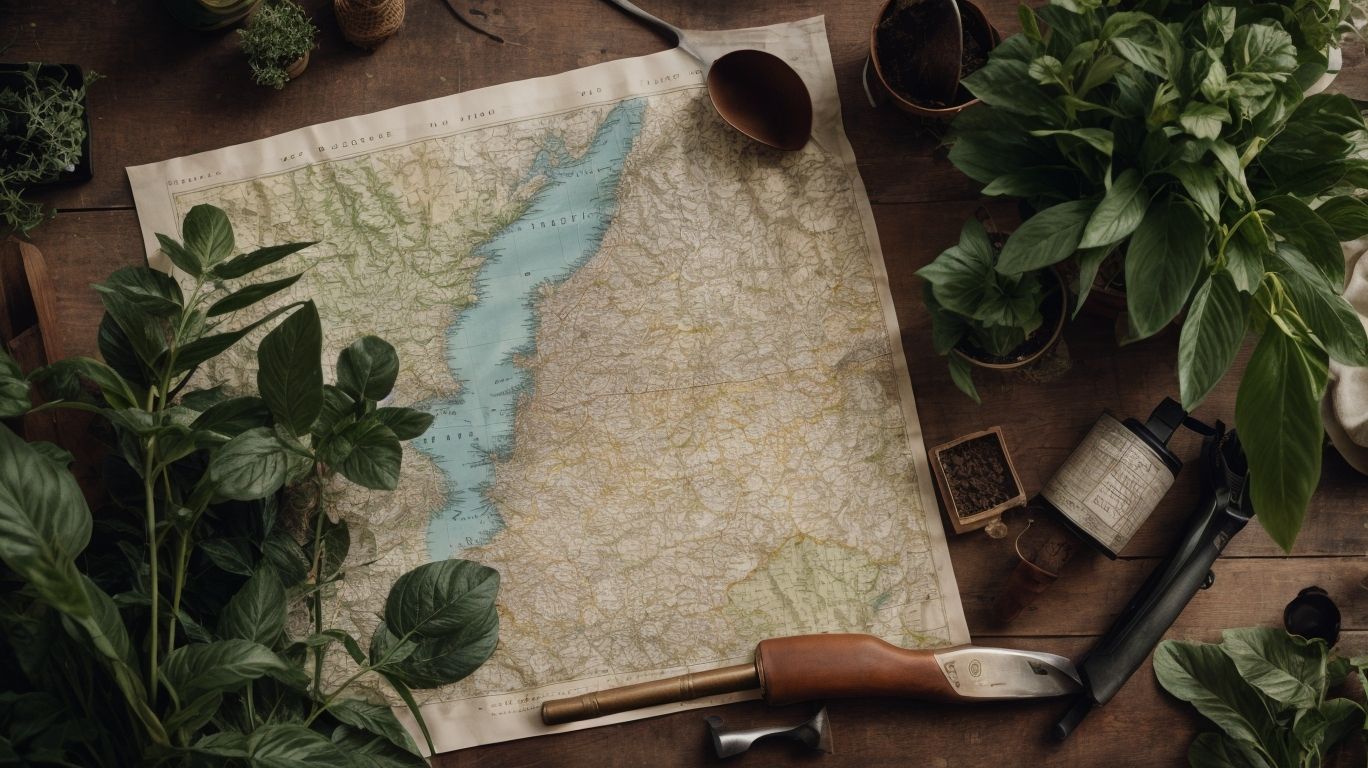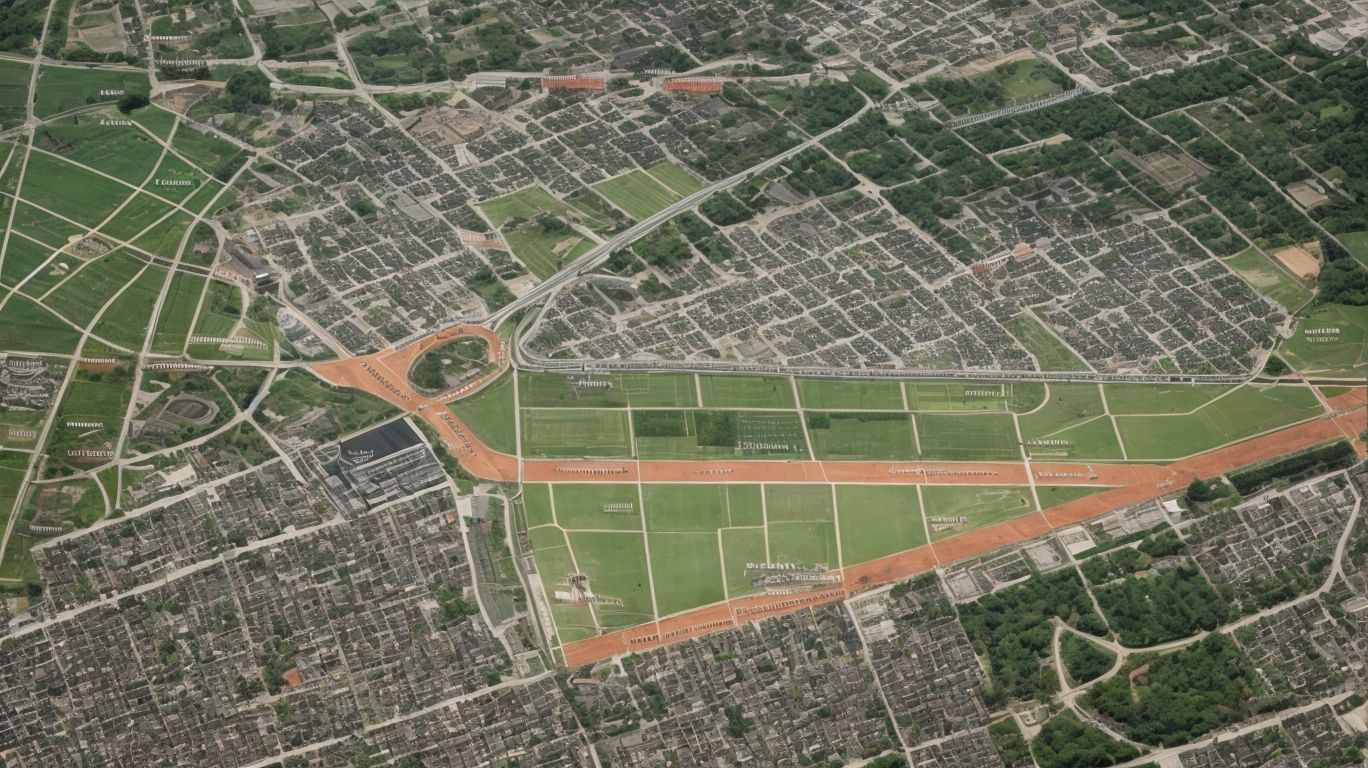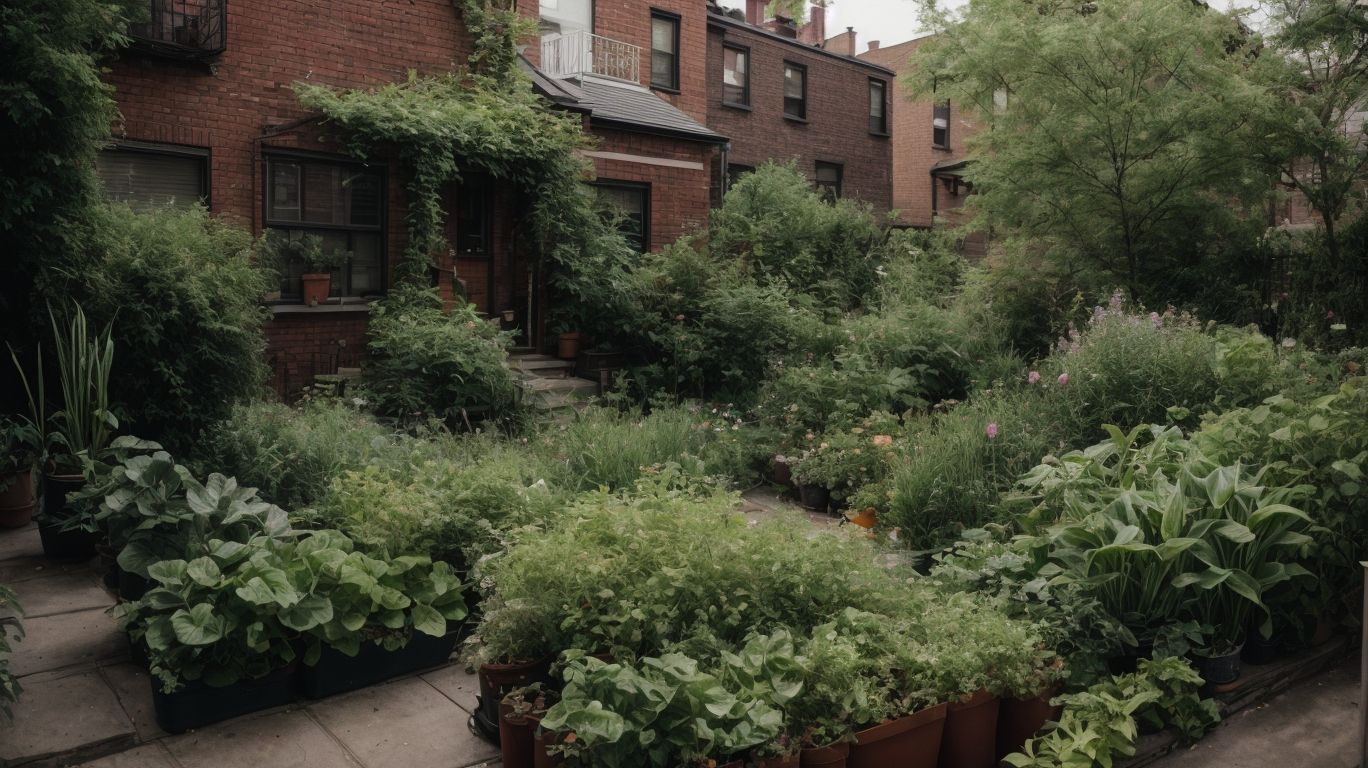Gardening zones play a crucial role in determining the types of plants that will thrive in a specific area. Understanding your gardening zone is essential for successful gardening, as it provides valuable information about the climate and environmental conditions in your region.
In this article, we will explore the significance of knowing your gardening zone, how to find it, and the factors that influence it. We will also discuss the plants suitable for gardening zone 18972 and the best gardening practices for this specific zone. By the end of this article, you will have a comprehensive understanding of gardening zones and be equipped with the knowledge to create a thriving garden in zone 18972.
Key Takeaways:
What is a Gardening Zone?
A gardening zone, often referred to as a plant hardiness zone, is a geographic area defined by the USDA map that indicates the expected lowest winter temperature in that region.
This classification system, ranging from Zone 1 (with the coldest temperatures) to Zone 13 (with the warmest), helps gardeners and horticulturists select plants that are suitable for their specific climate. In Pennsylvania, the hardiness zones range from 5a in the northwest to 7b in the southeast, reflecting the state’s diverse climate conditions.
For instance, Erie, Pennsylvania falls in Zone 6a, while Philadelphia falls in Zone 7a. Understanding these growing zones is crucial for successful cultivation of plants, as it enables individuals to pick varieties that can withstand the local weather conditions and thrive.”
Why is Knowing Your Gardening Zone Important?
Knowing your gardening zone is crucial for understanding the specific plant hardiness and the expected winter temperatures in your area, which guides the selection of suitable plants and provides essential care instructions.
Plant hardiness refers to a plant’s ability to tolerate certain environmental conditions, particularly the cold temperatures of winter. The USDA Plant Hardiness Zone Map is a valuable resource that divides North America into 13 zones based on average annual minimum winter temperatures. By identifying your zone on this map, you can determine the specific climatic conditions that plants can thrive in and choose those best suited for your area. Considering the potential winter temperatures in your zone is crucial for providing adequate care to ensure the health and survival of your plants during the colder months.
How to Find Your Gardening Zone?
Finding your gardening zone can be done using various methods, such as referring to the USDA Hardiness Zone Map or utilizing the Quick Zip Code Search tool available at your local nurseries.
You can also find your gardening zone by visiting local nurseries and seeking guidance from knowledgeable staff, who can provide valuable insights based on the climate and soil conditions specific to your area. Another helpful approach is to use digital resources, such as online gardening forums and websites, where experienced gardeners often share information about plant hardiness and successful gardening practices tailored to different zones.
By combining these methods, you can gain a comprehensive understanding of your gardening zone and make informed decisions when selecting plants for your garden.
Using the USDA Hardiness Zone Map
The USDA Hardiness Zone Map is a comprehensive resource that provides detailed information about gardening zones, facilitating the selection of plants suitable for specific regions.
By utilizing this map, gardeners can easily determine which plants are likely to thrive in their local climate based on temperature and weather patterns. This invaluable tool helps individuals make informed choices about what to plant, reducing the risk of investing in species that may struggle or fail to survive.
Additionally, USDA Hardiness Zone Map downloads are readily available online, allowing quick access to this vital information for garden planning and landscaping projects.
Using the Sunset Climate Zones Map
The Sunset Climate Zones Map is an alternative tool to identify gardening zones, especially for regions such as Pennsylvania, offering valuable insights into the specific climatic conditions that influence plant suitability.
Understanding the unique climate zones using this map is crucial for gardeners in Pennsylvania as it helps in selecting the right plants that are more likely to thrive in the specific regional climates. The map not only categorizes zones based on temperature, but also considers factors like elevation, proximity to large bodies of water, and microclimates. This comprehensive approach enables gardeners to make informed decisions about which plants are most likely to flourish, leading to more successful and sustainable gardens.
Using Your ZIP Code
Utilizing your ZIP code is a convenient method to determine your gardening zone, providing localized information that is tailored to specific areas such as Aaronsburg, Pennsylvania.
When you enter your ZIP code into a gardening zone finder tool, it takes into account the unique climate and geographical characteristics of your area, offering accurate guidance for plant selection and care.
For instance, in Aaronsburg, Pennsylvania, knowing the specific gardening zone is crucial for successful cultivation, as it dictates which plants will thrive in the region’s climate and soil conditions.
This localized approach ensures that you receive personalized recommendations for planting and maintaining your garden, aligning with the nuances of your local environment.
Factors That Affect Gardening Zones
Several factors influence gardening zones, including temperature variations, elevational gradients, and the proximity to bodies of water, all of which contribute to the unique plant hardiness in different regions.
The temperature variations play a crucial role in determining the suitability of plants in a specific region. Low temperatures during the winter months can restrict the variety of plants that can thrive, while high temperatures in the summer may limit the options for certain crops.
The variance in microclimates within a region can also impact the plant hardiness, with some areas being more sheltered or exposed to extreme weather conditions.
Temperature
Temperature, particularly the minimum winter temperature, is a primary determinant of gardening zones, affecting the types of plants that can thrive in a specific region.
The temperature variations in different areas play a crucial role in determining the plant hardiness and suitability for a particular environment. By understanding the hardiness zones, gardeners can make informed decisions about which plants can withstand the winter temperatures in their region. For example, a plant rated for zone 8 would struggle in a colder zone 5.
The adaptation and resilience of plants to varying temperatures make it essential to consider the winter temperatures for successful gardening.
Elevation
Elevation plays a crucial role in determining gardening zones, particularly in regions such as Pennsylvania, as it affects local climate patterns and plant adaptation to varying altitudes.
The diverse topography of Pennsylvania, spanning from low-lying valleys to the Appalachian Mountains, results in a wide range of elevations across the state. This variation in elevation significantly impacts the local climates, leading to different gardening zones and microclimates.
For example, higher elevations experience cooler temperatures and shorter growing seasons, influencing the types of plants that can thrive in these areas. In contrast, lower elevations may have milder temperatures and longer growing seasons, allowing for the cultivation of different plant species.
Proximity to Bodies of Water
The proximity to bodies of water, such as lakes or rivers, can significantly influence gardening zones, creating microclimates that impact the local environment and plant growth.
Water bodies, due to their moderating effects, alter the temperature variations in the surrounding areas, thus modifying the hardiness zone.
Areas near water tend to experience milder winters and cooler summers, which can extend the growing season for plants not typically suited for the region’s hardiness zone.
The humidity levels near water bodies contribute to the creation of a more suitable environment for certain plant species, fostering their growth and adaptation to the local conditions.
What Plants are Suitable for Gardening Zone 18972?

Credits: Monkinthegarden.Com – Justin Garcia
Gardening Zone 18972 encompasses a unique range of suitable plants, including those featured in the popular eBook authored by Mary Ellen Ellis, which highlights the latest plant trends ideal for this specific zone.
This zone, also known as Zone 7b, offers an exciting array of perennials, shrubs, and ornamental grasses that thrive in its specific climate and conditions. Ellis’s eBook delves into the characteristics and maintenance tips for these plants, providing a valuable resource for both novice and experienced gardeners. The trend towards native plants for sustainability and pollinator-friendly gardens is prominent in the latest gardening practices, making the eBook a timely and informative read for enthusiasts in this zone.
What are the Best Gardening Practices for Zone 18972?

Credits: Monkinthegarden.Com – Henry Baker
Zone 18972 requires specific gardening practices and care instructions, including guidance on planting, watering, and maintenance, which can be found in comprehensive gardening tips tailored for this zone.
In Zone 18972, it is important to select plants that thrive in the unique climate and soil conditions. Consider native species or drought-resistant varieties to ensure a successful garden. When planting, be mindful of spacing and sunlight requirements for each plant species to promote healthy growth.
Watering techniques play a crucial role in sustaining a thriving garden in Zone 18972. It’s recommended to water deeply but infrequently to encourage root development and prevent water wastage. Utilizing mulch can also help retain moisture and regulate soil temperature.
Regular maintenance tasks such as weeding, pruning, and fertilizing are essential for the long-term health of your garden. Keep an eye out for pests and diseases, addressing any issues promptly to avoid widespread damage.
Planting at the Right Time
Planting at the right time is essential for Zone 18972 in Pennsylvania, ensuring that plants are introduced during optimal periods that align with the local climate and seasonal variations.
By aligning planting schedules with the regional climate, gardeners in Zone 18972 can maximize the chances of successful growth and bountiful harvests. Understanding the specific seasonal variations such as frost dates and temperature ranges is crucial for selecting the appropriate planting time for various crops.
This mindful approach allows for the utilization of the local environmental conditions to their advantage, ultimately promoting healthy plant development.
Choosing Native Plants
Selecting native plants for Zone 18972, particularly in regions such as Adams County, Pennsylvania, is crucial for promoting biodiversity and ensuring the adaptation of species to the local environment.
Native plants are adapted to the specific climate, soil, and ecological conditions of a region, making them resilient and well-suited to thrive in Zone 18972. By choosing native species, gardeners can create landscapes that support local wildlife, such as birds, bees, and butterflies, by providing essential food and habitat. Additionally, native plants often require less maintenance and are more resistant to pests and diseases, reducing the need for chemical interventions. This contributes to healthier ecosystems and a more sustainable approach to landscaping in Adams County, Pennsylvania.
Using Mulch and Compost
Utilizing mulch and compost in Zone 18972 contributes to the enrichment of the local environment, providing essential nutrients, moisture retention, and organic matter that support plant growth and vitality.
When mulch is applied to the soil surface, it helps in regulating soil temperature, suppressing weed growth, and preventing soil erosion. It enhances the soil structure, allowing better water infiltration and air movement. This favors the beneficial microorganisms present in the soil, resulting in improved soil health.
Compost, on the other hand, acts as a natural fertilizer, enriching the soil with organic matter and essential nutrients. It promotes the development of a diverse and robust soil ecosystem, enhancing the soil’s ability to retain moisture and support the growth of healthy plants. This sustainable practice reduces the need for synthetic fertilizers and promotes the overall health of the local environment.
Providing Adequate Water and Sunlight
Ensuring adequate water and sunlight in Zone 18972 is crucial for plant health and growth, requiring careful attention to irrigation, positioning, and light exposure to meet specific care requirements.
Proper irrigation is essential to provide plants in Zone 18972 with the necessary moisture levels for healthy growth. As water needs vary between different species, understanding the specific requirements of each plant is paramount.
Additionally, positioning plants to receive the appropriate amount of sunlight is vital. Taking into consideration the direction of natural light and potential shading factors can significantly impact the overall well-being of the plants.
Frequently Asked Questions
1. What is the process for locating the gardening zone for 18972?
The gardening zone for 18972 can be located by using a gardening zone map or by inputting your zip code into an online gardening zone finder tool.
2. Where can I find a gardening zone map for 18972?
Gardening zone maps can often be found at local gardening or home improvement stores, or they can be easily accessed online through various gardening websites.
3. Can I use a gardening zone map from a previous year to determine my gardening zone for 18972?
It is recommended to use the most current gardening zone map available, as zones can change over time due to factors such as climate change. Using an outdated map may result in inaccurate gardening zone information for 18972.
4. Are there any other factors besides zip code that determine my gardening zone for 18972?
Yes, while zip code is the primary factor in determining gardening zones, other factors such as elevation, proximity to bodies of water, and microclimates can also affect your gardening zone.
5. How can I ensure that I am using the correct gardening zone for 18972?
It is always best to double-check your gardening zone information with multiple sources to ensure accuracy. Additionally, observing the weather patterns and growing conditions in your specific area can also help determine your gardening zone.
6. Is it necessary to know my gardening zone for 18972?
Knowing your gardening zone can be extremely helpful in selecting the right plants for your area and ensuring their success. It can also aid in proper timing for planting and providing adequate care for your garden.
Gardening zone maps can often be found at local gardening or home improvement stores, or they can be easily accessed online through various gardening websites.
3. Can I use a gardening zone map from a previous year to determine my gardening zone for 18972?
It is recommended to use the most current gardening zone map available, as zones can change over time due to factors such as climate change. Using an outdated map may result in inaccurate gardening zone information for 18972.
4. Are there any other factors besides zip code that determine my gardening zone for 18972?
Yes, while zip code is the primary factor in determining gardening zones, other factors such as elevation, proximity to bodies of water, and microclimates can also affect your gardening zone.
5. How can I ensure that I am using the correct gardening zone for 18972?
It is always best to double-check your gardening zone information with multiple sources to ensure accuracy. Additionally, observing the weather patterns and growing conditions in your specific area can also help determine your gardening zone.
6. Is it necessary to know my gardening zone for 18972?
Knowing your gardening zone can be extremely helpful in selecting the right plants for your area and ensuring their success. It can also aid in proper timing for planting and providing adequate care for your garden.
Yes, while zip code is the primary factor in determining gardening zones, other factors such as elevation, proximity to bodies of water, and microclimates can also affect your gardening zone.
5. How can I ensure that I am using the correct gardening zone for 18972?
It is always best to double-check your gardening zone information with multiple sources to ensure accuracy. Additionally, observing the weather patterns and growing conditions in your specific area can also help determine your gardening zone.
6. Is it necessary to know my gardening zone for 18972?
Knowing your gardening zone can be extremely helpful in selecting the right plants for your area and ensuring their success. It can also aid in proper timing for planting and providing adequate care for your garden.
Knowing your gardening zone can be extremely helpful in selecting the right plants for your area and ensuring their success. It can also aid in proper timing for planting and providing adequate care for your garden.


